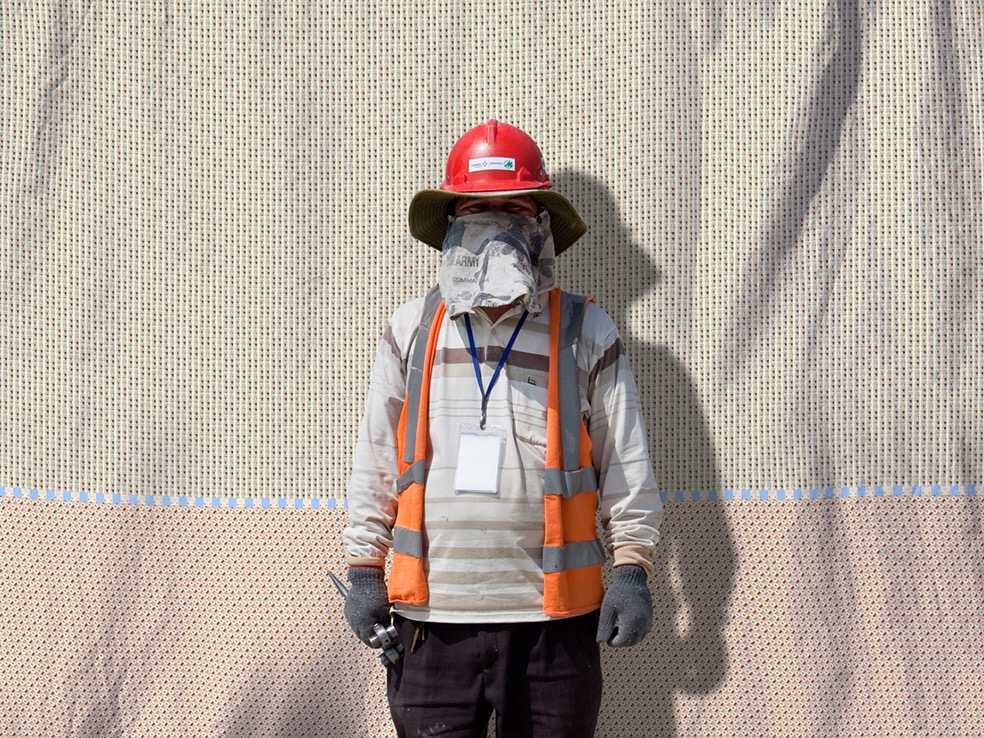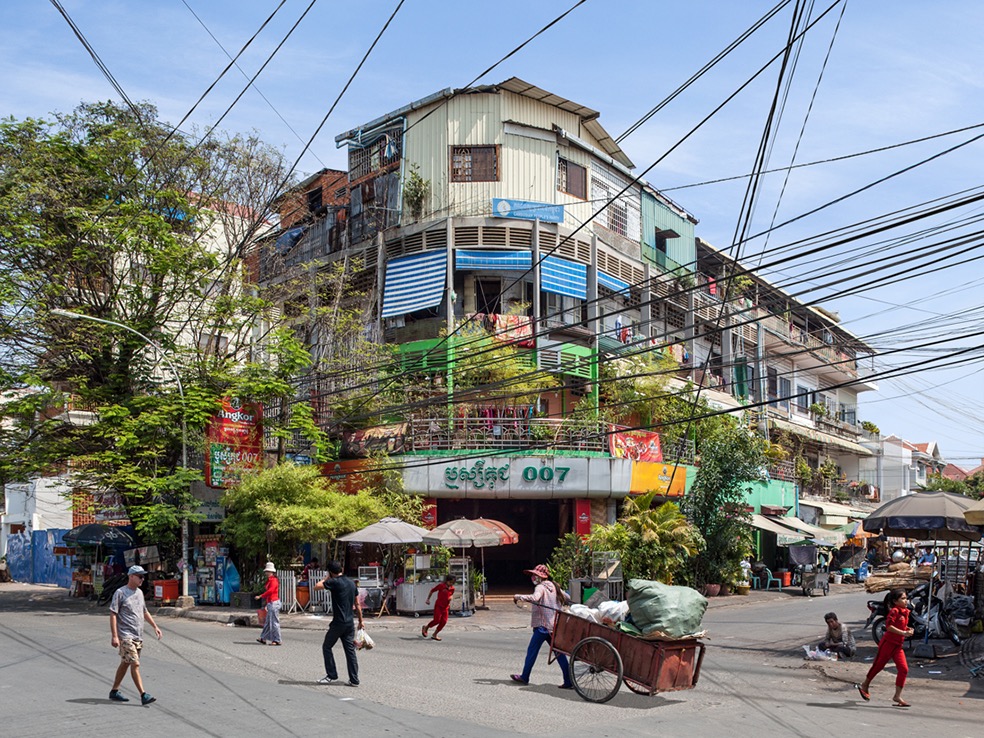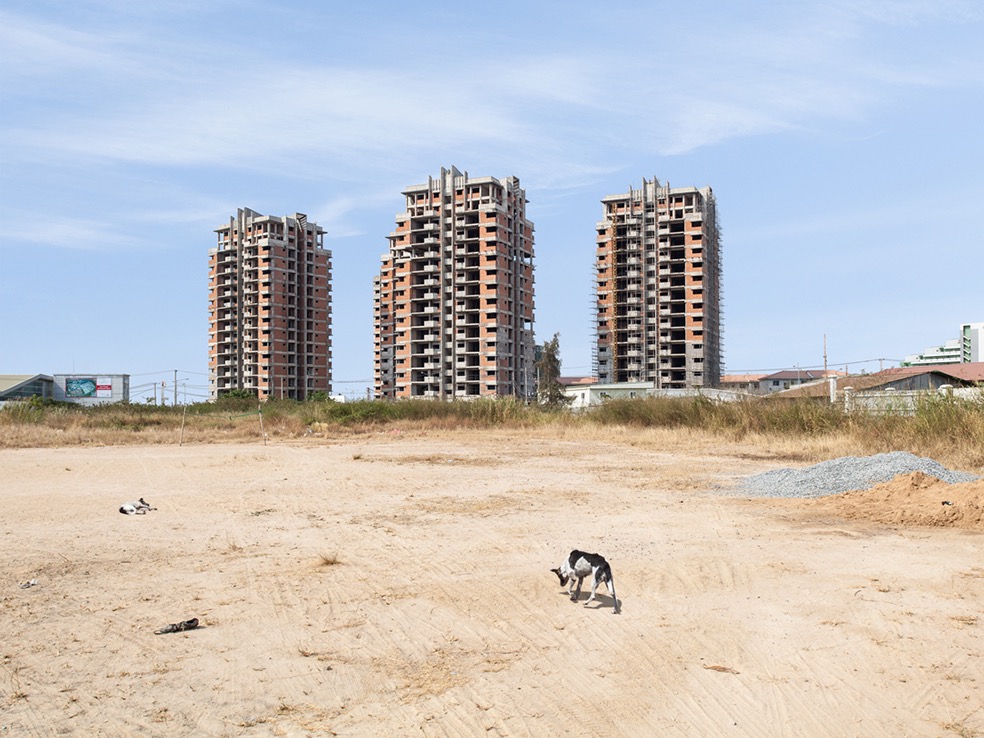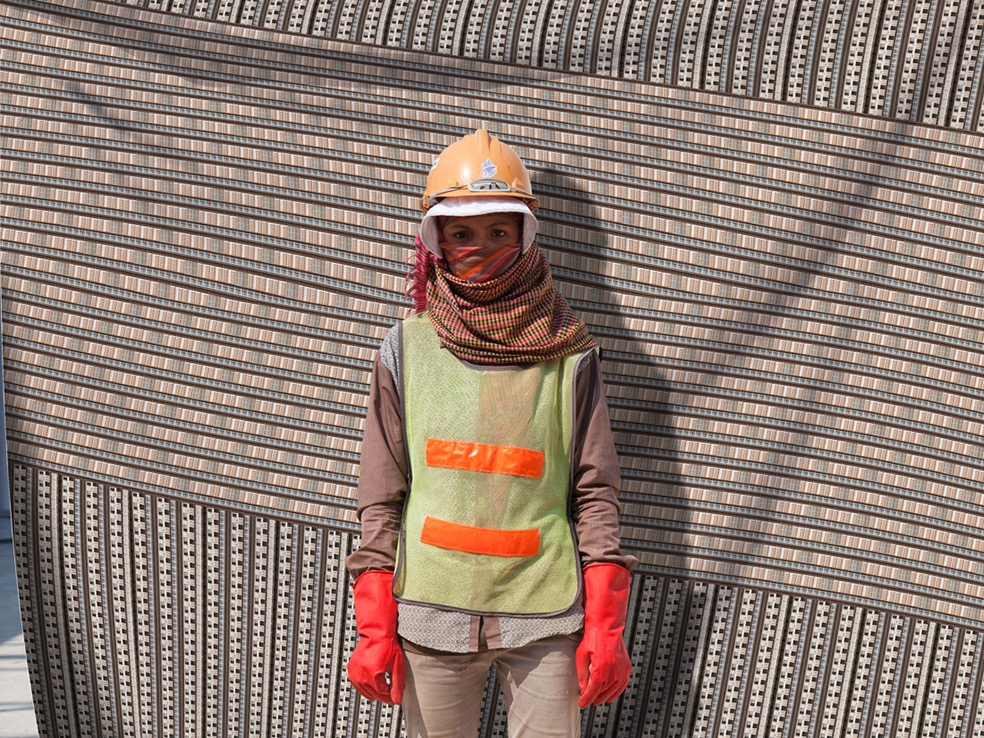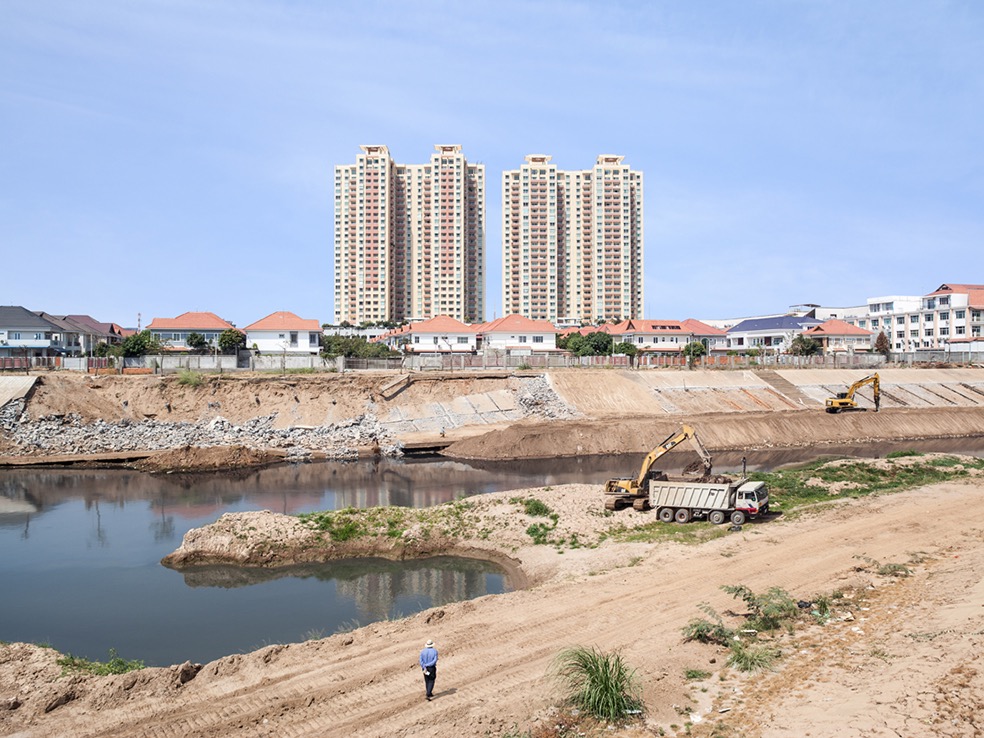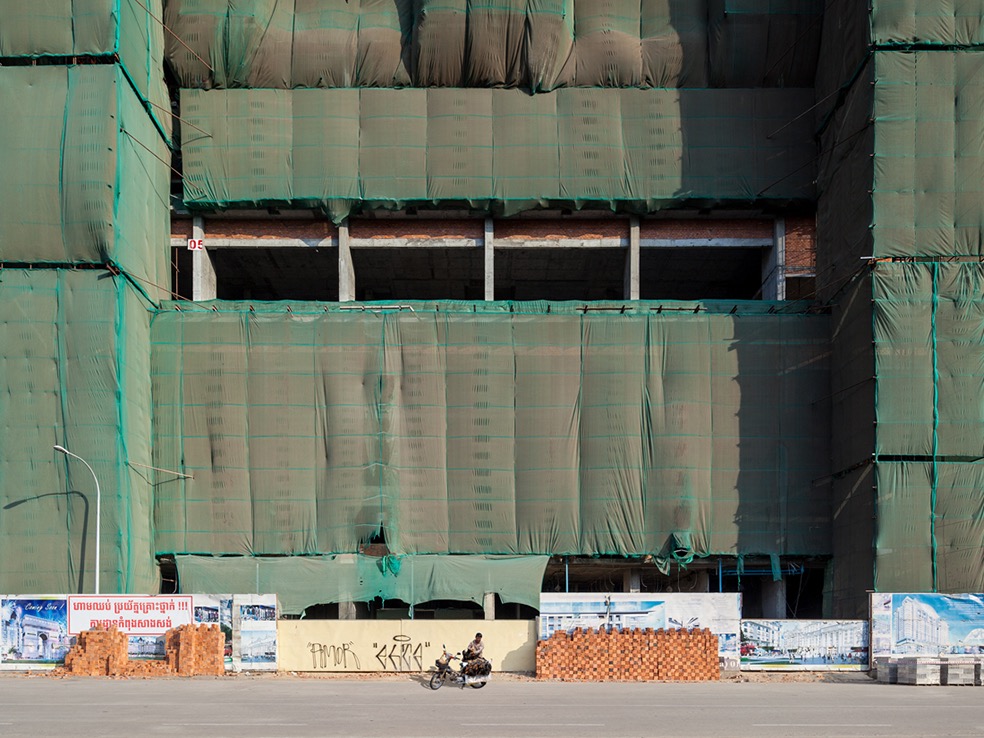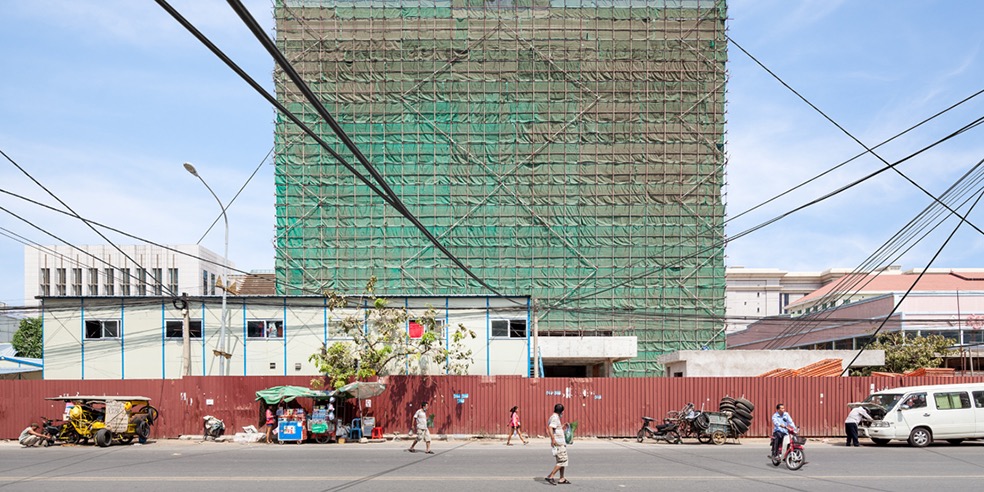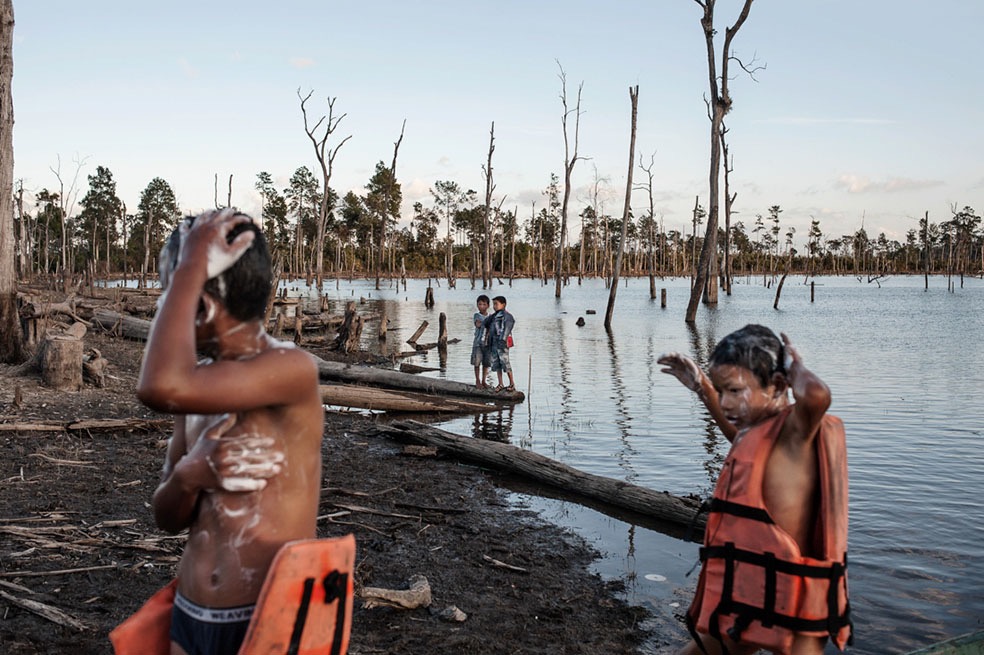Phnom Penh is a unique example of our times of a capital that was almost entirely stripped of its population. Buildings were abandoned and traffic prohibited, as well as schools and public spaces being converted into farmland: from 1975 to 1979, the Khmer Rouge regime advocated domination over the “new people” by peasants, campaigns in a city regarded decadent and corrupted by the West, and attempted to establish an egalitarian and rural society. A redundant Phnom Penh fell silent and symbolically slipped below the radar in Cambodia.
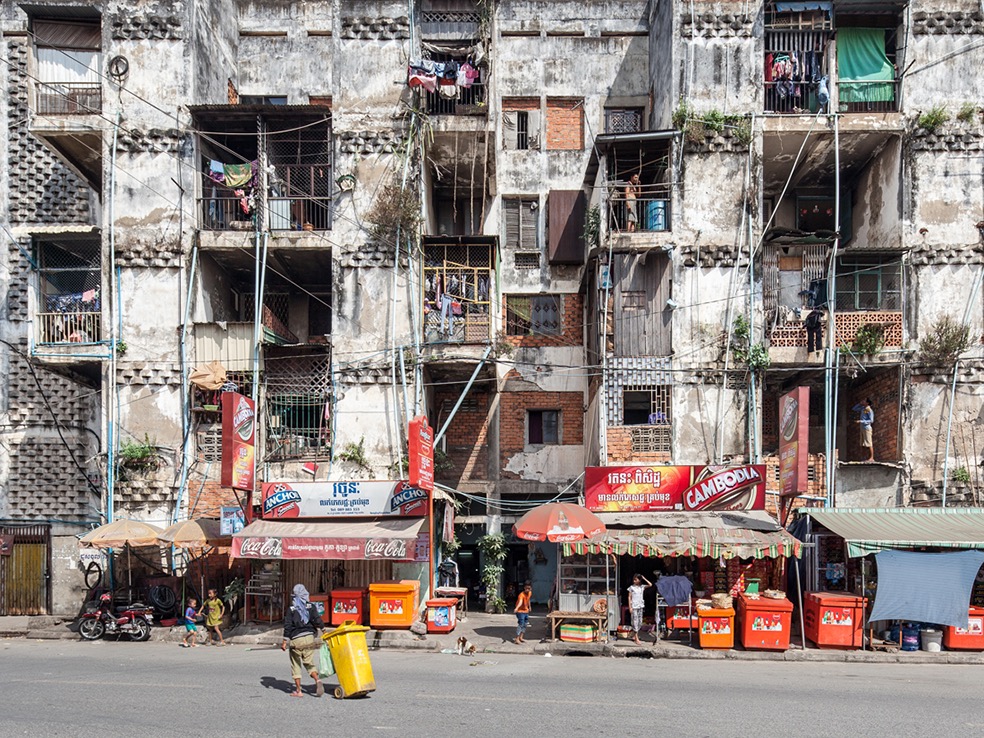
Forty years later, the demands of promoters have replaced communist propaganda. Populations are no longer moved for ideological reasons, but due to pressure from the housing market. Economic development projects have substituted the throngs littering the horizon, condemned to forced labour in the fields, with labourers on soaring building sites. Consequently, in what form can the account of urbicide, this will to destroy and deny urban life, be presented in a booming capital? What place does the changing city grant to any visible and invisible traces of the past?
The Grand Opening of Phnom Penh series haphazardly recollects a legacy, one that is still painful and little expressed, by documenting ambivalent figures that animate public areas portraying haste, disappearance, friction and tension between the bodies. The city in the background is elusive again, this time concealed behind a grid of scaffolding and the disorderly backdrop of the electricity network. Empty space and covering up, unintended replicas of Land Art interventions, can be seen as the patterns of a new, abstract and ephemeral architecture, that occludes the gaps in collective memory to further divulge them.
At a time when the Cambodian capital can finally anticipate the future of Asian metropolises, the inertia of the landscape indirectly summons the question of identity. The identity of a city with an uncertain morphology, one that is still being shaped; the identity of the individual faced with a saturated field of vision due to a multitude of motifs.
This work was carried out from February to March 2015, whilst in residence for the Institut français du Cambodge, and is awarded the Maison Blanche Prize for contemporary photography (Marseille, 2016).
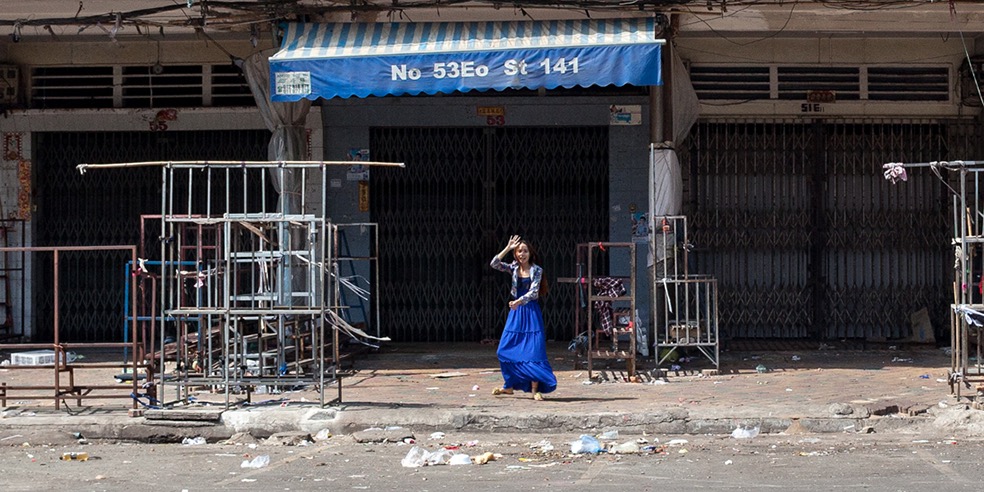
Alban Lécuyer – Born in Paris in 1977 and graduated from Superior School of Journalism of Lille. Alban Lécuyer contributes to various magazines (Arts Magazine, Tête-à-tête, Fragil.org, etc.) and collaborates with public organizations or private companies (advertising campaigns, photographic missions). He also teaches the history of photography and the interpretation of pictures at the DMA of Nantes. His personal project focuses on the representations of the collective housing (political, media, commercial, social representations) and on the place of all and sundry facing the alteration of urban spaces.
Website: albanlecuyer.com
